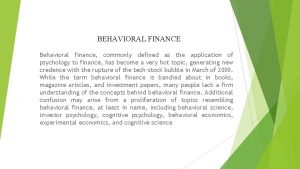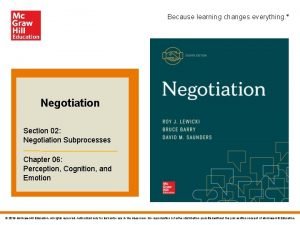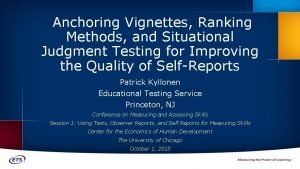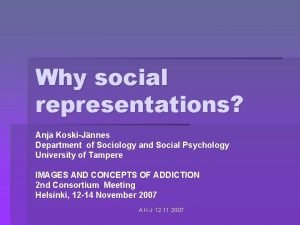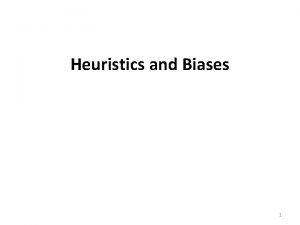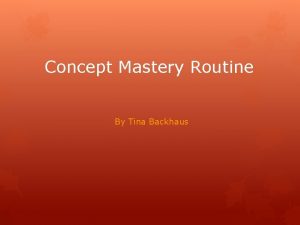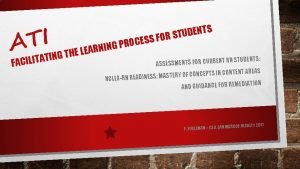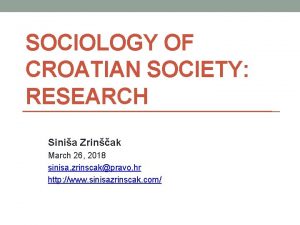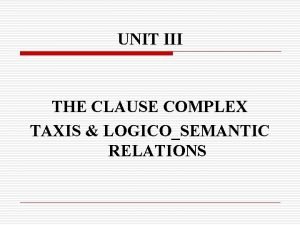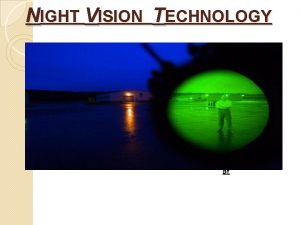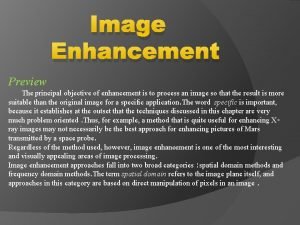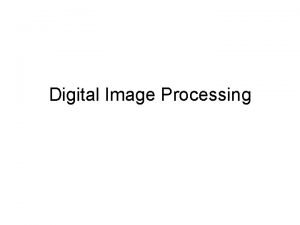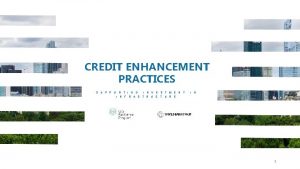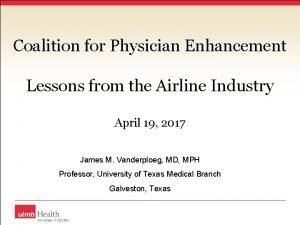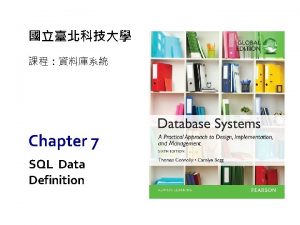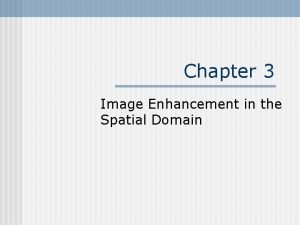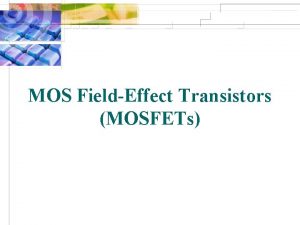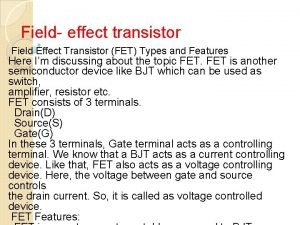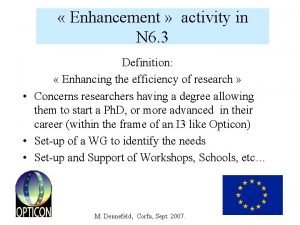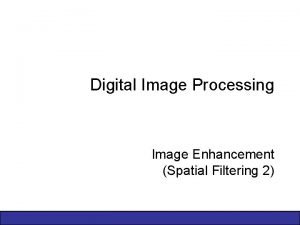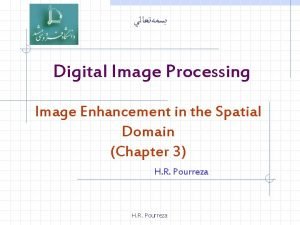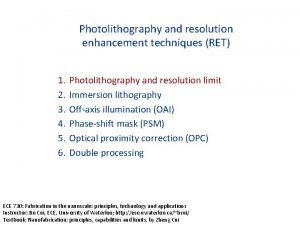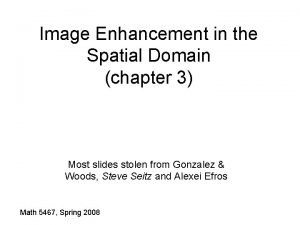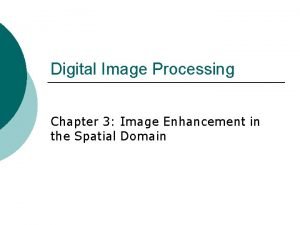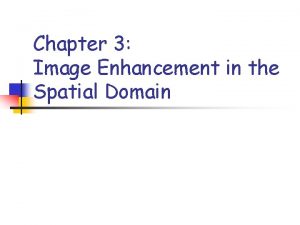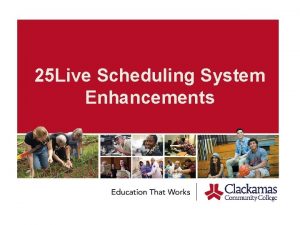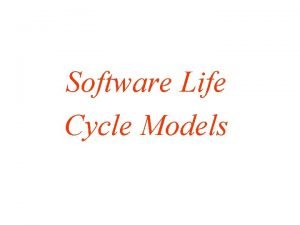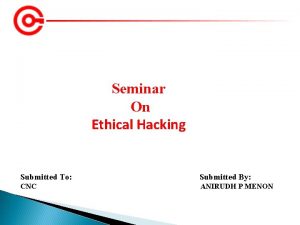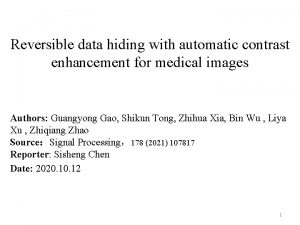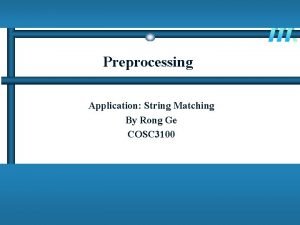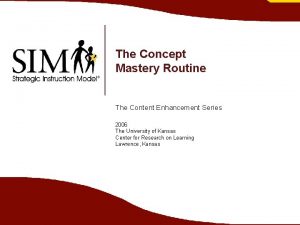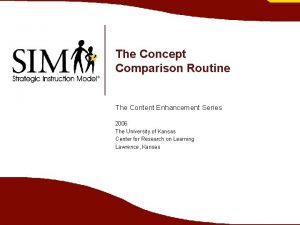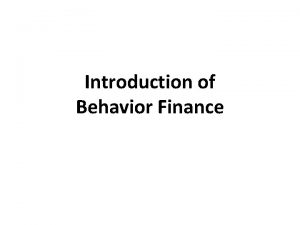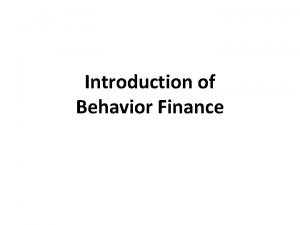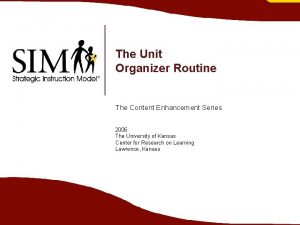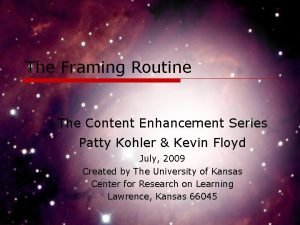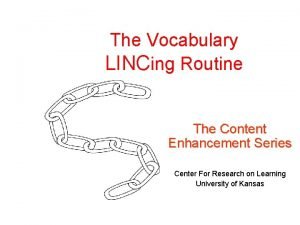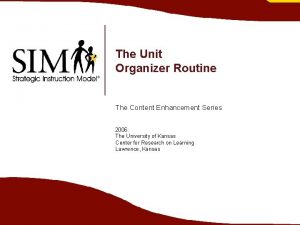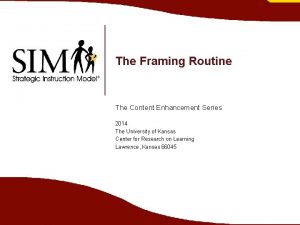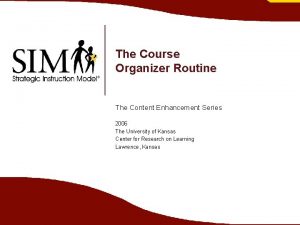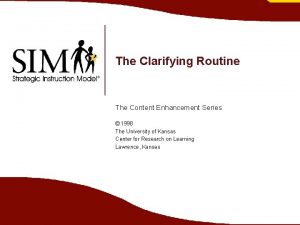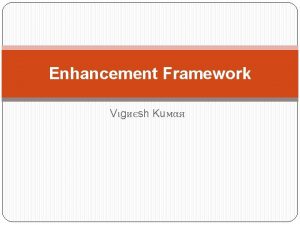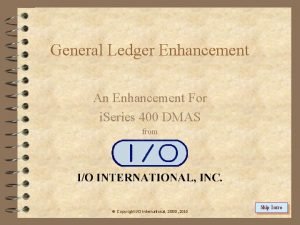The Concept Anchoring Routine The Content Enhancement Series



















































- Slides: 51

The Concept Anchoring Routine The Content Enhancement Series 2006 The University of Kansas Center for Research on Learning Lawrence, Kansas 66045

Content Enhancement A way of teaching an academically diverse group of students in which: – Both group and individual needs are valued and met; – The integrity of the content is maintained; 2 University of Kansas Center for Research on Learning 2006

Content Enhancement A way of teaching an academically diverse group of students in which: – Critical features of the content are selected and transformed in a manner that promotes student learning; and – Instruction is carried out in a partnership with students. 3 University of Kansas Center for Research on Learning 2006

Guidebooks in the Content Enhancement Series • Routines for planning and leading learning – Course Organizer Routine – Unit Organizer Routine – Lesson Organizer Routine 4 University of Kansas Center for Research on Learning 2006

Guidebooks in the Content Enhancement Series • Routines for exploring text, topics, and details – – Clarifying Routine Framing Routine Survey Routine The ORDER Routine 5 University of Kansas Center for Research on Learning 2006

Guidebooks in the Content Enhancement Series • Routines for teaching concepts – Concept Anchoring Routine – Concept Comparison Routine – Concept Mastery Routine 6 University of Kansas Center for Research on Learning 2006

Guidebooks in the Content Enhancement Series • Routines for enhancing performance – – – Teaching Cause and Effect Routine Question Exploration Routine Recall Enhancement Routine Vocabulary LINCing Routine Quality Assignment Routine 7 University of Kansas Center for Research on Learning 2006

Understanding the Challenge of Diversity • Introduction of difficult but important concepts requires creating connections to background knowledge. • Increased student diversity results in varying levels and types of background knowledge. 8 University of Kansas Center for Research on Learning 2006

Understanding the Challenge of Diversity • Students need new ways of thinking about critical concepts. • Teachers can take advantage of student diversity as they anchor new information to help students find and build learning on known information. 9 University of Kansas Center for Research on Learning 2006

Responding to the Challenge The Concept Anchoring Routine helps students to: – Focus on key concepts. – Use prior knowledge to understand new concepts. – Focus attention on similarities between concepts. 10 University of Kansas Center for Research on Learning 2006

Responding to the Challenge The Concept Anchoring Routine helps students to: – Understand the usefulness of analogies in understanding and learning. – Remember a way to think about new concepts. – Interact with the teacher and other students to explore and understand new concepts. – Record information for later studying and use. 11 University of Kansas Center for Research on Learning 2006

Supporting Research • The Concept Anchoring Routine was studied in secondary content-area classes (grades 7 -11) characterized by diversity. • In each study, teachers learned the Concept Anchoring Routine easily, and student learning gains were observed by both teachers and researchers. 12 University of Kansas Center for Research on Learning 2006

Supporting Research • In the study, students in various groups gained an average of 7 to 27 percentage points on tests or tasks that required students to demonstrate understanding of a new concept. Teachers continued using the routine after the studies were completed. 13 University of Kansas Center for Research on Learning 2006

Supporting Research • These results were achieved when teachers: – received 2 -3 hours of instruction in the routine, – had opportunities to discuss the routine with colleagues, – spent the necessary time to plan and use the routine for more inclusive teaching, – taught students how to participate in and use the routine, and – used the routine regularly over time. 14 University of Kansas Center for Research on Learning 2006

Components of The Concept Anchoring Routine The Anchoring Table Teaching Device The ANCHORS Linking Steps The Cue-Do-Review Sequence 15 University of Kansas Center for Research on Learning 2006

The Anchoring Table Teaching Device Is a visual device that: – is used under teacher guidance; – facilitates teaching by analogy, that is, using descriptions or stories that tell how two things are similar even though, on the surface, they do not seem alike; 16 University of Kansas Center for Research on Learning 2006

The Anchoring Table Teaching Device Is a visual device that: – focuses attention on a New Concept and a Known Concept; – identifies critical features of each concept; – prompts elaboration based on prior knowledge; – helps make relationships between concepts clear; 17 University of Kansas Center for Research on Learning 2006

The Anchoring Table Teaching Device Is a visual device that: – is designed to enhance student. . . understanding of new concepts, . . . remembering of ways to think about new, information, . . . responses to evaluation tasks activities, . . . belief in the value of the content. 18 University of Kansas Center for Research on Learning 2006 difficult

Anchoring Table Unit: 3 Known Information 2 4 Known Concept Characteristics of Known Concept 6 Name: Date: 1 New Concept 5 Characteristics of New Concept Characteristics Shared 7 Understanding of the New Concept: ANCHORS Linking Steps: 1 Announce the New Concept 2 Name Known Concept 19 University of Kansas Center for Research on Learning 2006 3 Collect Known Information 4 Highlight Characteristics of Known Concept 5 Observe Characteristics of New Concept 6 Reveal Characteristics Shared 7 State Understanding of New Concept

The Teaching Device: The Anchoring Table Unit: 3 Known Information 2 teachers 4 administrators Known Concept Characteristics of Known Concept Rules, written or understood, tell how power is divided. rules Characteristics Shared 6 5 teachers make assignments administrators expel Some powers belong to New Concept Federalism in the U. S. A. Characteristics of New Concept Decisions are made by state & national govts. 2 groups are involved. Rules tell how power is divided. Rules, based on Constitution, tell how power is divided. penalties not sure if powers are written down Date: 1 Decision making in your school Decisions are made by administrators & teachers. Name: Some powers belong to one group. administrators (expel). Some powers belong to national govt (war, money). Some powers belong to teachers (give assignments). Some powers belong to the other group. Some powers belong to states (education, marriage, gambling). Some powers belong to both (make rules, set penalties). Some powers belong to both groups. Some powers belong to both (tax, punish crimes). 7 Understanding of the New Concept: Federalism in the U. S. A. is a form of government in which decisions are made by both state and national govts. Rules to decide how power is divided are based on the Constitution. Some powers (e. g. , make war, coin money) belong to the national govt. Other powers (e. g. , education, marriage, gambling) belong to the states. Some powers (e. g. , tax, punish crimes) belong to both. 20 ANCHORS Linking Steps: 1 Announce the New Concept 2 Name Known Concept University of Kansas Center for Research on Learning 2006 3 Collect Known Information 4 Highlight Characteristics of Known Concept 5 Observe Characteristics of New Concept 6 Reveal Characteristics Shared 7 State Understanding of New Concept

The Teaching Device: The Anchoring Table Unit: 3 Known Information 2 teachers 4 administrators Known Concept Characteristics of Known Concept Characteristics Shared 6 5 Rules tell how power is divided. not sure if powers are written down teachers make assignments administrators expel Characteristics of New Concept Rules, based on Constitution, tell how power is divided. The New Concept penalties New Concept Federalism in the U. S. A. Decisions are made by state & national govts. 2 groups are involved. Rules, written or understood, tell how power is divided. rules Date: 1 Decision making in your school Decisions are made by administrators & teachers. Name: A concept. Some is apowers category orgroup. class into. Some powers belong to national belong to one administrators (expel). which events, ideas, or objects can be govt (war, money). grouped. Some powers belong to teachers (give assignments). Some powers belong to the other Some powers belong to states Some powers belong to both (make rules, set penalties). Some powers belong to both groups. Some powers belong to both (tax, punish crimes). The choice of the New Concept is dictated group. (education, marriage, gambling). by what is considered difficult but very important for all students to understand. The name of the New Concept is written as a word or a phrase. 7 Understanding of the New Concept: Federalism in the U. S. A. is a form of government in which decisions are made by both state and national govts. Rules to decide how power is divided are based on the Constitution. Some powers (e. g. , make war, coin money) belong to the national govt. Other powers (e. g. , education, marriage, gambling) belong to the states. Some powers (e. g. , tax, punish crimes) belong to both. 21 ANCHORS Linking Steps: 1 Announce the New Concept 2 Name Known Concept University of Kansas Center for Research on Learning 2006 3 Collect Known Information 4 Highlight Characteristics of Known Concept 5 Observe Characteristics of New Concept 6 Reveal Characteristics Shared 7 State Understanding of New Concept

The Teaching Device: The Anchoring Table Unit: 3 Known Information 2 teachers 4 administrators Known Concept Characteristics of Known Concept Characteristics Shared 6 5 2 groups are involved. tell how power is divided. The Known. Rules Concept penalties not sure if powers are written down teachers make assignments administrators expel New Concept Federalism in the U. S. A. Characteristics of New Concept Decisions are made by state & national govts. Rules, written or understood, tell how power is divided. rules Date: 1 Decision making in your school Decisions are made by administrators & teachers. Name: Rules, based on Constitution, tell how power is divided. This name represents a different category or powers belong to one group. class from the. Some New Concept; however, it. Some must powers belong to national administrators (expel). share some critical characteristics with the govt (war, money). New Concept. Some powers belong to teachers (give assignments). Some powers belong to the other Some powers belong to states group. The Known Concept must be familiar to(education, all themarriage, gambling). students in the class. Some powers belong to both (make rules, set penalties). Some powers belong to both The name of the Known Concept is written as groups. (tax, punish crimes). a word or a phrase that is parallel to the New Concept. 7 Understanding of the New Concept: Federalism in the U. S. A. is a form of government in which decisions are made by both state and national govts. Rules to decide how power is divided are based on the Constitution. Some powers (e. g. , make war, coin money) belong to the national govt. Other powers (e. g. , education, marriage, gambling) belong to the states. Some powers (e. g. , tax, punish crimes) belong to both. 22 ANCHORS Linking Steps: 1 Announce the New Concept 2 Name Known Concept University of Kansas Center for Research on Learning 2006 3 Collect Known Information 4 Highlight Characteristics of Known Concept 5 Observe Characteristics of New Concept 6 Reveal Characteristics Shared 7 State Understanding of New Concept

The Teaching Device: The Anchoring Table Unit: 3 Known Information 2 teachers 4 administrators Known Concept Name: Date: 1 Decision making in your school Characteristics of Known Concept 6 Characteristics Shared 5 New Concept Federalism in the U. S. A. Characteristics of New Concept Decisions are made by state & national govts. Decisions are made by administrators & teachers. Known Information 2 groups are involved. This is a list of the words, phrases, or sentences that represent Rules tell how power is divided. based. Concept. on Constitution, correct information students know about the Rules, Known Rules, written or understood, tell how power is divided. rules penalties not sure if powers are written down teachers make assignments administrators expel tell how power is divided. The list is the result. Some of a "brainstorm" activity in which students' powers belong to one group. Some powers belong to national knowledge about the Known Concept is elicited. Some powers belong to administrators (expel). govt (war, money). The teacher adds words needed to develop the analogy if Some powersthem. belong to the other Some powers belong to states students Some powers belong to do not volunteer teachers (give assignments). group. (education, marriage, gambling). Students are informed that all the words help create a good understanding of the Known Concept, but several will be used to Some powers belong to both help them understand the New Concept. (make rules, set penalties). groups. (tax, punish crimes). The key words that will be used to develop the analogy are underlined by the teacher. 7 Understanding of the New Concept: Federalism in the U. S. A. is a form of government in which decisions are made by The list of Known Information can be written on the Anchoring Table or on a board. both state and national govts. Rules to decide how power is divided are based on the Constitution. Some powers (e. g. , make war, coin money) belong to the national govt. Other powers (e. g. , education, marriage, gambling) belong to the states. Some powers (e. g. , tax, punish crimes) belong to both. 23 ANCHORS Linking Steps: 1 Announce the New Concept 2 Name Known Concept University of Kansas Center for Research on Learning 2006 3 Collect Known Information 4 Highlight Characteristics of Known Concept 5 Observe Characteristics of New Concept 6 Reveal Characteristics Shared 7 State Understanding of New Concept

The Teaching Device: The Anchoring Table Unit: 3 Known Information 2 teachers 4 administrators Known Concept Characteristics of Known Concept Characteristics Shared 6 Decisions are made by administrators & teachers make assignments administrators expel 5 New Concept Federalism in the U. S. A. Characteristics of New Concept Decisions are made by state & national govts. 2 groups are involved. Rules tell how power is divided. Rules, based on Constitution, Characteristics oftellthe Known how power is divided. Concept penalties not sure if powers are written down Date: 1 Decision making in your school Rules, written or understood, tell how power is divided. rules Name: Some powers belong to one group. administrators (expel). These are words or phrases govt (war, that money). explain how the Known Concept is different from other Some concepts. powers belong to the other Some powers belong to states Some powers belong to teachers (give assignments). Some powers belong to both (make rules, set penalties). 7 Understanding of the New Concept: group. Some powers belong to national (education, marriage, gambling). Other words for "characteristics" include "qualities, " "traits, " and "attributes. " Some powers belong to both (tax, punish crimes). groups. Federalism in the U. S. A. Create a short phrase or sentence for each of the underlined words in the Known Information List that captures the essence of is aaform of government in which are made by characteristic ofdecisions the Known Concept. both state and national govts. Rules to decide how power is divided are based on the Constitution. Some powers (e. g. , make war, coin money) belong to the national govt. Other powers (e. g. , education, marriage, gambling) belong to the states. Some powers (e. g. , tax, punish crimes) belong to both. 24 ANCHORS Linking Steps: 1 Announce the New Concept 2 Name Known Concept University of Kansas Center for Research on Learning 2006 3 Collect Known Information 4 Highlight Characteristics of Known Concept 5 Observe Characteristics of New Concept 6 Reveal Characteristics Shared 7 State Understanding of New Concept

The Teaching Device: The Anchoring Table Unit: 3 Known Information 2 teachers 4 administrators Known Concept Decisions are made by administrators & teachers. Rules, written or understood, tell how power is divided. rules penalties not sure if powers are written down teachers make assignments administrators expel 7 Date: 1 Decision making in your school Characteristics of Known Concept Name: Characteristics Shared 6 5 New Concept Federalism in the U. S. A. Characteristics of New Concept Decisions are made by state & national govts. 2 groups are involved. Rules tell how power is divided. Characteristics of the. Some New powers belong to one group. Some powers belong to Concept administrators (expel). These are short phrases or sentences that to the other Some powers belong to describe characteristics of Some the powers Newbelong Concept. group. Rules, based on Constitution, tell how power is divided. Some powers belong to national govt (war, money). teachers (give assignments). Some powers belong to states (education, marriage, gambling). (make rules, set penalties). Some powers belong to both (tax, punish crimes). These characteristics are parallel in meaning to the of the. Some Known Somecharacteristics powers belong to both powers Concept. belong to both groups. The teacher poses questions to help students see similarities between each set of characteristics of the Known Concept and the Understanding of the New Concept: Federalism in the U. S. A. is a form of government in which decisions are made by New Concept. both state and national govts. Rules to decide how power is divided are based on the Constitution. Some powers (e. g. , make war, coin money) belong to the national govt. Other powers (e. g. , education, marriage, gambling) belong to the states. Some powers (e. g. , tax, punish crimes) belong to both. 25 ANCHORS Linking Steps: If necessary, the teacher supplies the name of the characteristic or helps form it 1 Announce 2 Name 3 Collect 4 Highlight accurately. the New Concept Known Information Characteristics of University of Kansas Center for Research on Learning 2006 Known Concept 5 Observe Characteristics of New Concept 6 Reveal Characteristics Shared 7 State Understanding of New Concept

The Teaching Device: The Anchoring Table Unit: 3 Known Information 2 teachers 4 administrators Known Concept Characteristics of Known Concept Characteristics Shared 6 Decisions are made by administrators & teachers. 5 teachers make assignments administrators expel Some powers belong to 2 groups are involved. Rules tell how power is divided. Some powers belong to one group. Some powers belong to teachers (give assignments). Some powers belong to the other group. Some powers belong to both (make rules, set penalties). Some powers belong to both groups. Federalism in the U. S. A. Characteristics of New Concept Characteristics Shared These are words, phrases or sentences that name larger groups or categories Some powers belong to national to which the parallel govt (war, money). characteristics of the Known Concept and Some powers belong to states the New Concept (education, marriage, gambling). belong. Rules, based on Constitution, tell how power is divided. administrators (expel). 7 Understanding of the New Concept: New Concept Federalism in the U. S. A. Decisions are made by state & national govts. penalties not sure if powers are written down Date: 1 Decision making in your school Rules, written or understood, tell how power is divided. rules Name: The teacher poses questions to help students identify these categories or groups. is a form of government in which decisions are made by Some powers belong to both (tax, punish crimes). both state and national govts. Rules to decide how power is divided are based on the Constitution. Some powers (e. g. , make war, coin money) belong to the national govt. Other powers (e. g. , education, marriage, gambling) belong to the states. Some powers (e. g. , tax, punish crimes) belong to both. 26 ANCHORS Linking Steps: 1 Announce the New Concept 2 Name Known Concept University of Kansas Center for Research on Learning 2006 3 Collect Known Information 4 Highlight Characteristics of Known Concept 5 Observe Characteristics of New Concept 6 Reveal Characteristics Shared 7 State Understanding of New Concept

The Teaching Device: The Anchoring Table Unit: 3 Known Information 2 teachers 4 administrators Known Concept penalties not sure if powers are written down teachers make assignments administrators expel Date: 1 Decision making in your school New Concept Federalism in the U. S. A. Understanding of the New Concept Characteristics of Known Concept 6 Characteristics Shared 5 Characteristics of New Concept Decisions are made by state & This is a sentence(s) that represents the 2 groups are involved. national govts. students' understanding of the New Concept in either spoken or written forms. Decisions are made by administrators & teachers. Rules, written or understood, tell how power is divided. rules Name: Rules tell how power is divided. Rules, based on Constitution, Students can be prompted to create a definition tell how power is divided. of the New Concept using all of its Some powers belong to one group. characteristics. Some powers belong to national administrators (expel). govt (war, money). Alternatively, students can be prompted to create a statement which explains how the New Concept Some powers belong to the other Some powers belong to states Some powers belong to and the Known Concept are related and(education, includes group. marriage, gambling). teachers (give assignments). the Characteristics Shared. Some powers belong to both (make rules, set penalties). 7 Understanding of the New Concept: Some powers belong to both groups. Some powers belong to both (tax, punish crimes). Federalism in the U. S. A. is a form of government in which decisions are made by both state and national govts. Rules to decide how power is divided are based on the Constitution. Some powers (e. g. , make war, coin money) belong to the national govt. Other powers (e. g. , education, marriage, gambling) belong to the states. Some powers (e. g. , tax, punish crimes) belong to both. 27 ANCHORS Linking Steps: 1 Announce the New Concept 2 Name Known Concept University of Kansas Center for Research on Learning 2006 3 Collect Known Information 4 Highlight Characteristics of Known Concept 5 Observe Characteristics of New Concept 6 Reveal Characteristics Shared 7 State Understanding of New Concept

The ANCHORS Linking Steps Guide the teacher in ways to: – present the Anchoring Table effectively; – involve students in constructing and using the Anchoring Table; – elicit and make connections to the prior knowledge of students; and – focus student attention on learning. 28 University of Kansas Center for Research on Learning 2006

The ANCHORS Linking Steps • Announce the New Concept. • Name the Known Concept. • Collect Known Information. • Highlight Characteristics of the Known Concept. 29 University of Kansas Center for Research on Learning 2006

The ANCHORS Linking Steps • Observe Characteristics of the New Concept. • Reveal Characteristics Shared. • State Understanding of the New Concept. 30 University of Kansas Center for Research on Learning 2006

The Teaching Device: The Anchoring Table Unit: 3 Known Information 2 teachers 4 administrators Known Concept Characteristics of Known Concept Rules, written or understood, tell how power is divided. rules Characteristics Shared 6 5 not sure if powers are written down teachers make assignments administrators expel Some powers belong to New Concept Federalism in the U. S. A. Characteristics of New Concept Decisions are made by state & national govts. 2 groups are involved. Rules tell how power is divided. Rules, based on Constitution, tell how power is divided. The Linking Steps penalties Date: 1 Decision making in your school Decisions are made by administrators & teachers. Name: Some powers belong to one group. Some powers belong to national These steps guide the teacher during the in-class administrators (expel). govt (war, money). interactive presentation of the Anchoring Table. Some powers belong to the other Some powers belong to states The teacher prepares a draft of the Anchoring group. Table in advance of the lesson, but the (education, final marriage, gambling). version is co-constructed with the students Some powers belong to both class. Some powers belong to both during Some powers belong to both Some powers belong to teachers (give assignments). (make rules, set penalties). groups. (tax, punish crimes). These steps are cued by the acronym ANCHORS. 7 Understanding of the New Concept: Federalism in the U. S. A. is a form of government in which decisions are made by both state and national govts. Rules to decide how power is divided are based on the Constitution. Some powers (e. g. , make war, coin money) belong to the national govt. Other powers (e. g. , education, marriage, gambling) belong to the states. Some powers (e. g. , tax, punish crimes) belong to both. 31 ANCHORS Linking Steps: 1 Announce the New Concept 2 Name Known Concept University of Kansas Center for Research on Learning 2006 3 Collect Known Information 4 Highlight Characteristics of Known Concept 5 Observe Characteristics of New Concept 6 Reveal Characteristics Shared 7 State Understanding of New Concept

The Cue-Do-Review Sequence The overall instructional process that guides use of the Anchoring Table and ANCHORS Linking Steps. 32 University of Kansas Center for Research on Learning 2006

The Cue-Do-Review Sequence Cue The teacher announces the Anchoring Table and explains its use and expectations for student participation. 33 University of Kansas Center for Research on Learning 2006

The Cue-Do-Review Sequence Do The teacher and class collaboratively construct the device using the ANCHORS Linking Steps that “connect” the content to the needs and goals of students. 34 University of Kansas Center for Research on Learning 2006

The Cue-Do-Review Sequence Review Information presented in the Anchoring Table is reviewed and confirmed, and the process of developing the analogy is reviewed. 35 University of Kansas Center for Research on Learning 2006

Ready? • Decide when to use the routine. • Collect needed materials. • Construct a draft. • Select implementation option. 36 University of Kansas Center for Research on Learning 2006

Ready? • Construct a draft. – Specify and name the new, difficult concept. – Analyze the characteristics of the New Concept that are critical to understanding. – Identify a Known Concept familiar to all students with characteristics similar to those of the New Concept. – Select characteristics of the Known Concept that are parallel to characteristics of the New Concept. 37 University of Kansas Center for Research on Learning 2006

Ready? • Construct a draft. – Prepare a list of information about the Known Concept that students will probably generate in discussion. – Plan ways to label the larger groups to which the paired characteristics of both the Known Concept and the New Concept belong. – Decide on how you will ask students to show their understanding of the New Concept (definition of the New Concept or explanation of the analogy). 38 University of Kansas Center for Research on Learning 2006

Anchoring Table Implementation Options 1. Vary the sequence of Linking Steps to suit student needs. Many teachers elicit the whole list of characteristics of the Known Concept, then work across the table horizontally to elicit each characteristic of the New Concept and corresponding shared characteristic in turn. 39 University of Kansas Center for Research on Learning 2006

Anchoring Table Implementation Options 2. Alternatively, teachers may use one of the following sequences: Sequence A – develop the characteristics of the Known Concept – present the characteristics of the New Concept – ask students to develop the shared characteristics together 40 University of Kansas Center for Research on Learning 2006

Anchoring Table Implementation Options Sequence B – develop the names of the Shared Characteristics – elicit characteristics of the New Concept Sequence C – work horizontally across the table eliciting one characteristic of each of the following in turn • Known Concept • New Concept • Characteristic Shared 41 University of Kansas Center for Research on Learning 2006

Anchoring Table Implementation Options 3. Use different types of analogies – Concrete analogies – Recurring patterns – Narratives 42 University of Kansas Center for Research on Learning 2006

Anchoring Table Implementation Options 4. If space on the Anchoring Table seems limited, use the alternate form of the Anchoring Table and develop the Known Information List on a board. 5. Use different cooperative group activities to vary the use of the routine. 43 University of Kansas Center for Research on Learning 2006

Anchoring Table Unit: 3 Known Information 2 4 Known Concept Characteristics of Known Concept 6 Name: Date: 1 New Concept 5 Characteristics of New Concept Characteristics Shared 7 Understanding of the New Concept: ANCHORS Linking Steps: 1 Announce the New Concept 2 Name Known Concept 44 University of Kansas Center for Research on Learning 2006 3 Collect Known Information 4 Highlight Characteristics of Known Concept 5 Observe Characteristics of New Concept 6 Reveal Characteristics Shared 7 State Understanding of New Concept

Set? • Prepare to teach students about the Anchoring Table. • Introduce the Anchoring Table. • Describe how you will Cue the Anchoring Table. • Describe and model how you will Do the routine. • Explain how you will Review the information in the Anchoring Table. 45 University of Kansas Center for Research on Learning 2006

Go! • Use the routine explicitly. • Build lessons around Anchoring Tables. • Review understanding of Anchoring Tables as needed. • Be creative. • Beware of “pit” monsters. • Evaluate your use of the routine. 46 University of Kansas Center for Research on Learning 2006

Presentation Checks • Is the Anchoring Table large enough to see from the back of the classroom? • Are all the words legible? • Are characteristics presented in a parallel fashion, e. g. , all sentences or all parallel phrases? 47 University of Kansas Center for Research on Learning 2006

Presentation Checks • If phrases are used, is there a common stem so students can reconstruct the meaning on their own? • Have students been cued to take notes on the Anchoring Table? • Do students understand each part of the Anchoring Table? 48 University of Kansas Center for Research on Learning 2006

Presentation Checks • Have you checked on student understanding of the New Concept on the Anchoring Table? • Have you checked for student understanding of the process involved in developing the Anchoring Table? 49 University of Kansas Center for Research on Learning 2006

Presentation Checks • Have you made sure students know how to demonstrate understanding of the New Concept, i. e. , definition or analogy? 50 University of Kansas Center for Research on Learning 2006

Win! • Select the Anchoring Table as a personal growth target. • Choose a way to learn. • Choose a support system. • Plan for confidence building. • Debug. • Maximize the challenge. • Develop your ”ensurance" policy. 51 University of Kansas Center for Research on Learning 2006
 Negotiation anchoring
Negotiation anchoring Narrow range of experience
Narrow range of experience Negotiation anchoring
Negotiation anchoring Situational vignette
Situational vignette Anchoring
Anchoring Anchoring bias
Anchoring bias Concept mastery routine
Concept mastery routine Real content and carrier content in esp
Real content and carrier content in esp Dynamic content vs static content
Dynamic content vs static content Rn content mastery series 2020 proficiency levels
Rn content mastery series 2020 proficiency levels Definition of content analysis
Definition of content analysis Maclaurin series vs taylor series
Maclaurin series vs taylor series Heisenberg 1925 paper
Heisenberg 1925 paper Taylor vs maclaurin
Taylor vs maclaurin Taylor series lesson
Taylor series lesson P series ibm
P series ibm Current series feedback topology mixing is
Current series feedback topology mixing is Series aiding and series opposing
Series aiding and series opposing Sum of infinite series formula
Sum of infinite series formula Paractactic
Paractactic Www.dfps.state.tx.us/training/trauma informed care/
Www.dfps.state.tx.us/training/trauma informed care/ Digital print enhancement
Digital print enhancement Prk enhancement
Prk enhancement Static power dissipation in nmos inverter
Static power dissipation in nmos inverter Image enhancement in night vision technology
Image enhancement in night vision technology Objective of image enhancement
Objective of image enhancement Image enhancement definition
Image enhancement definition Mre
Mre Credit enhancement definition
Credit enhancement definition Coalition for physician enhancement
Coalition for physician enhancement Integrity enhancement features of sql
Integrity enhancement features of sql Combining spatial enhancement methods
Combining spatial enhancement methods What is the chemistry behind ml/pp and how does it work
What is the chemistry behind ml/pp and how does it work Pelembutan citra
Pelembutan citra Triode region current
Triode region current Fet
Fet Academic enhancement
Academic enhancement Enhancement activity meaning
Enhancement activity meaning Combining spatial enhancement methods
Combining spatial enhancement methods Point processing in image enhancement
Point processing in image enhancement Enhancement using arithmetic/logic operations
Enhancement using arithmetic/logic operations Iocl eprocurement
Iocl eprocurement Optical proximity correction
Optical proximity correction What is enhancement in the spatial domain?
What is enhancement in the spatial domain? Miriam ködderitzsch-frank
Miriam ködderitzsch-frank Iii image inhancement
Iii image inhancement Combining spatial enhancement methods
Combining spatial enhancement methods Live enhancement
Live enhancement It resembles the iterative enhancement model.
It resembles the iterative enhancement model. Seminar on ethical hacking
Seminar on ethical hacking Contrast enhancement
Contrast enhancement Input enhancement in string matching
Input enhancement in string matching

